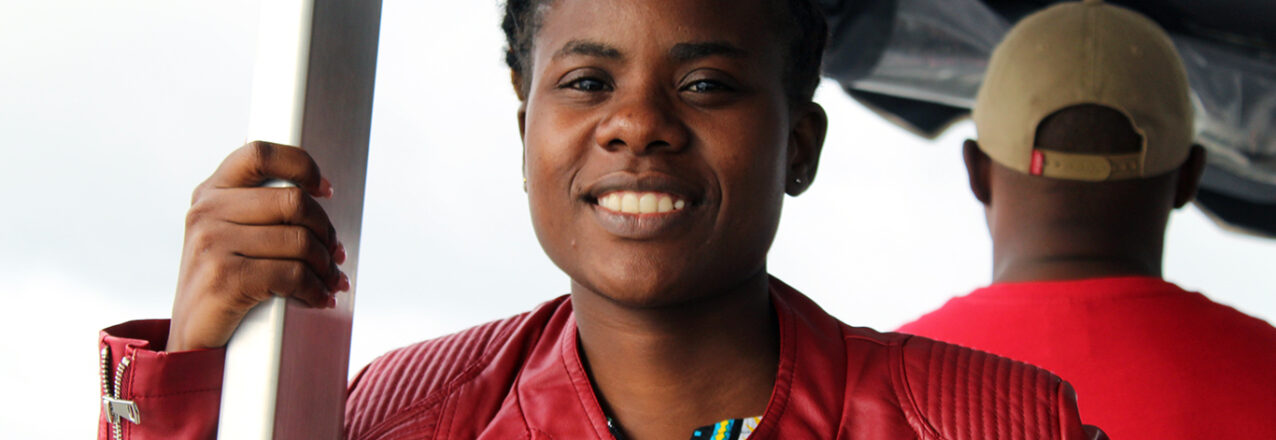Photo: Bupe Banda serves as the National Administrator for the Zambia Community Resource Board Association.
In Zambia, rural communities rarely have the funds and skills to effectively manage wildlife resources on their own. Community Resources Boards (CRBs) have long-represented communities within the wildlife sector, but have largely had isolated voices and limited ability to advocate for themselves with government or private sector stakeholders in the tourism industry. The Zambia CRB Association (ZCRBA) aims to unify these isolated community-led resource management groups to advocate for funds and support from the government. Here, the ZCRBA’s National Administrator, Bupe Banda, explains how USAID support is strengthening their capacity to lead and mediate between communities, government, and the private sector.
The Zambia Community Resources Board Association represents 76 CRBs across Zambia. As a unifying organization, how does the association help these community organizations?
CRBs have many challenges. One of the principle problems is obtaining their fair share of revenue from the government. For this, they need a strong, collective voice that can help guarantee their rights and benefit from the natural resources they are managing
What is the relationship between the CRBs and the government?
When trophy hunting and safari operators use the lands and resources of the communities, 50% of the revenue is returned to the communities, and the other 50% goes to the government. The challenge is that the Department of National Parks and Wildlife and other government entities have been erratically dispersing the money. In 2020, the association successfully campaigned for the release of outstanding funds due to communities and has begun lobbying for better policies that empower communities.
What do CRBs do with this money?
In game management areas, for example, these funds represent employment and a source of money for community development. In the eyes of the community, the CRB is much more respected than many of the government agencies, because CRBs implement livelihoods projects from which every household stands to benefit. This is why the association’s role as mediator is important. When CRBs talk, we make sure the government hears it; and when the government talks, we make sure the CRBs hear it.
How has the role of advocacy resulted in benefits for the CRBs?
To date our crowning achievement has been lobbying for the release of 19.8 million Zambian kwacha to CRBs earlier this year. The funds were the overdue fees from the 2018 and 2019 hunting seasons. We held a series of meetings with government ministers and mobilized chiefs from the communities. This led the Minister of Finance to commit to making the payments. This is advocacy with development.
How is USAID-funded leadership training helping to build the capacity of the association?
USAID has supported the ZCRBA leadership team to participate in a year-long regional training cohort called the African Conservation Leadership Network. This leadership training program is really helpful for an emerging leader like myself and an eye-opener of what it takes to build teams, be a leader, and what is involved in sometimes being a follower.
What new tools have you acquired?
We learned practical tools and techniques, models of planning, how to manage meetings, focus our work plan and relate to counterparts. We have refocused our strategy, communications, board governance, and fundraising. The fundraising aspect is very important. Currently we only receive USAID funding and subscription fees from our CRB constituents, but we want to expand our funding from other donors. The training was an opportunity to learn more about building networks for the sake of fundraising, how important our communications strategy is. These are reminders that we all need.
After the leadership training, how did you feel?
I feel more confident and more organized. I never thought I was the leader I am; I only thought I was somewhere within the vehicle, but I don’t know if I was driving or being driven. The CRB association is new, and we have a small staff and a large workload. For us to achieve and maintain the confidence of the donors, we need to deliver.
In what other ways has USAID helped get the association off the ground?
The USAID partnership has strengthened our ability to advocate for community rights with local and national leadership, and carry out high-level meetings where we can actually influence policy. The support from USAID has also helped us coordinate regional meetings with CRBs, create procurement manuals, and distribute low-cost mobile phones for every CRB. For many CRBs, these phones represent the only way they can access the Internet. As communications tools, they also help us conduct monthly reporting, and coordinate with members in a timely manner.
How is the USAID Partnership helping the association broaden the inclusion of women?
We know that women are not well represented in the natural resource management sector, and due to this, we have a special focus on ensuring that women are represented in employment opportunities, like community scouts, as well within CRB leadership. We want to make sure that the emerging female leaders within these communities have the support and role models they need to thrive.


